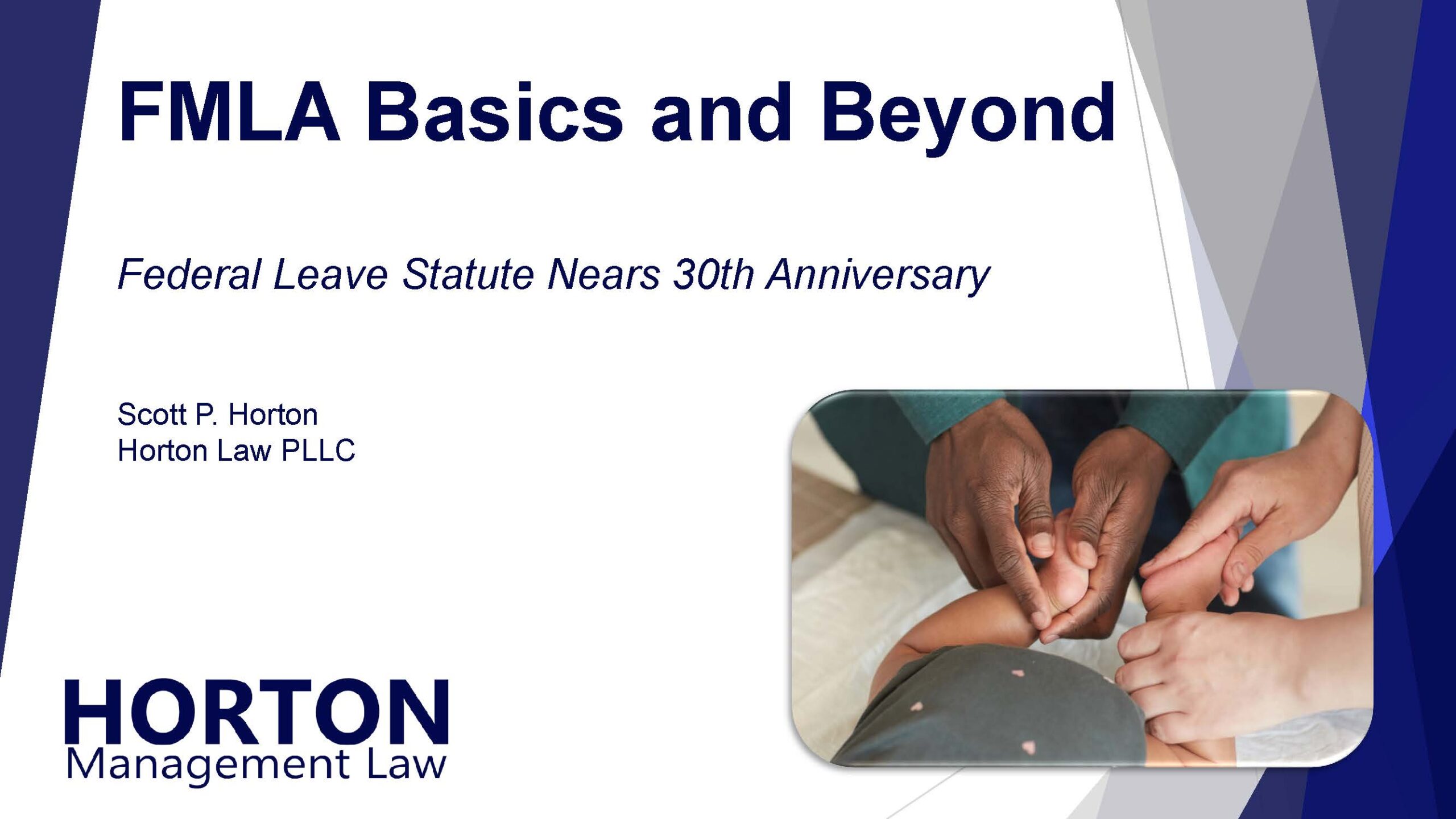On October 27, 2022, I presented a complimentary webinar entitled “FMLA Basics and Beyond”. For those who couldn’t attend the live webinar, I’m happy to make it available for you to watch at your convenience.
In the webinar, I discuss:
- Coverage & Eligibility
- Qualifying Circumstances
- Notice Obligations
- Compliance Traps
- Interaction with Other Laws
and much more!
President Bill Clinton signed the Family and Medical Leave Act (FMLA) into law on February 5, 1993. That means employers have been tasked with administering FMLA leaves for almost 30 years now. That doesn’t mean that compliance has become routine!
Though it has been a while since either the FMLA or its significant regulations have been amended, much else has changed in the world surrounding the leave granted by the statute. In this webinar, we take a look at applying the FMLA following a global pandemic and with an ongoing introduction of paid leave requirements that may interact with family and medical leave.
Why You Should Watch “FMLA Basics and Beyond”
The FMLA is far more involved than simply permitting employees 12 weeks of leave when they get sick or have a child. Did you know that some employees might be eligible to take up to 26 weeks off in a row? Or that employees can take FMLA leave to see a family member off to military service?
Employers with at least 50 employees must comply with the FMLA or risk significant penalties. Not sure whether your organization is covered, this webinar explains how to count employees to determine eligibility. Whether you’re familiar with applying the FMLA or not, it’s a complicated statute with tons of hidden pitfalls. We’ll discuss many of those and warn you where additional concerns may arise.
If you’re responsible for FMLA administration in your organization and haven’t reviewed the legal requirements lately, this is a great opportunity to be reminded of the many implications of employee leave requests. Do you know how the FMLA and ADA interact? What about state paid leave laws, such as sick leave and paid family leave, where they exist?
Don’t Miss Our Future Webinars!
Click here to sign up for the Horton Law email newsletter to be among the first to know when registration is open for upcoming programs! And follow us on LinkedIn for even more frequent updates on important employment law issues.


